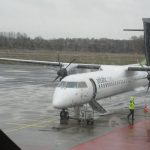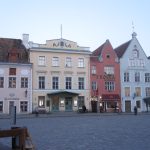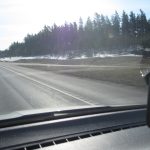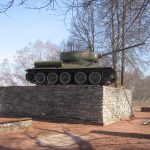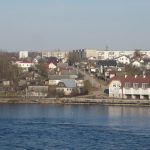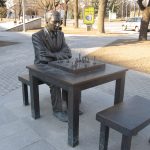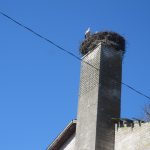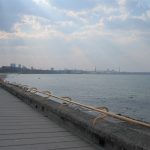Estonia 2019
CLICK ON PICTURES TO ENLARGE
Estonia 2019
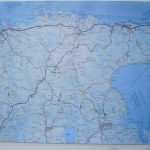 This was to be my third visit to Estonia, the others having been in 2006 and 2009, reported elsewhere on this site. My interest in the country was aroused by the novel “Firewall” by Andy McNab, which was set in 1999, while the country was emerging from its protracted period under Russian control. McNab described a country in which life was still quite hard for many people, with a degree of poverty and violence that had already improved significantly by the time I got there seven years later. I was particularly interested in the Russian enclave around Narva in the north-east, where 95% of the people were of Russian origin and spoke that language.
This was to be my third visit to Estonia, the others having been in 2006 and 2009, reported elsewhere on this site. My interest in the country was aroused by the novel “Firewall” by Andy McNab, which was set in 1999, while the country was emerging from its protracted period under Russian control. McNab described a country in which life was still quite hard for many people, with a degree of poverty and violence that had already improved significantly by the time I got there seven years later. I was particularly interested in the Russian enclave around Narva in the north-east, where 95% of the people were of Russian origin and spoke that language.
Following the 2014 annexation by Russia of Crimea, in Ukraine, there was concern about the possibility of a similar event in north-eastern Estonia, and at the time of my 2019 visit NATO forces, including British, were stationed in the area, although I did not see any sign of them.
My plan was to fly to Tallinn, the capital, and then over the next three days drive to Narva, then across country to Parnu, a resort in the south west, and back to Tallinn, a total distance of about 450 miles, so I would be fairly busy. After booking the flights it occurred to me that Tallinn is about the same latitude as the Orkney Islands and it might be a good deal colder than the south coast of England where I live. When I left home the BBC weather forecast optimistically promised wall-to-wall sunshine in the Baltic area for the whole duration of my stay, which did not seem very likely.
The flight was in two parts, via Riga in Latvia, and one problem with going to that area at weekends is that Riga and Tallinn are very popular with British stag parties, which can lead to situations in which one would like to pretend to be of some (almost any) other nationality, but on this occasion the obvious partygoers were quite well-behaved.
Tallinn
From Riga to Tallinn took only 45 minutes, and I was rather amused that the plane had propellers, the first time I have flown in one so-equipped for about 50 years. The temperature when the plane landed in Tallinn was 14 degrees, warmer than at home, with the promised sunshine. Avis had the car ready for me, a Skoda Fabia in near perfect condition, and I hit the city traffic at the rush hour. It was slow-going, not helped by the fact that my satnav would not work, but with the aid of my tablet I found the Bravo Spa Hotel in the old town without too much trouble. The hotel was in a complex with a gymnasium and other facilities which appeared to be attracting a lot of young professional people after work, creating a logistical nightmare to get into the strictly-controlled car park.
It was only a short distance to the city centre, with a wide choice of restaurants, so I walked down the road and got something to eat before having a look round the old town, which was much larger than I remembered. It was also tidier than on my previous visit, some of the buildings having been renovated to a degree but still retaining their authentic appearance. Although most of Estonia is quite flat, the streets of Tallinn rise to a considerable height from which it is possible to get some good views across the city.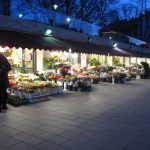
At about 8.00 on a Thursday evening I was surprised to see a row of open-fronted shops in the city centre offering a vast quantity of beautiful flowers. From the small number of people around it was hard to believe that most of them would find buyers before they deteriorated to the point where they could not be sold.
Getting out of the car park the next morning was less of a challenge than getting into it, and I was soon on my way to Narva. The weather was beautiful and I managed to get the satnav working. On the way out of the city I passed through an area of huge Soviet-style blocks of flats that I had seen from the plane, and resolved to have a closer look at them on the way back, because they are where a large proportion of the people live. At least they were white or bright colours instead of the original drab grey concrete.
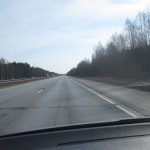 The road had been considerably upgraded since my last trip and was dual carriageway for about 50 miles, with a better surface than most roads in England now. The traffic was light and I thought the driving was very good, with almost everyone sticking to the speed limit and no tailgating, unlike at home. Some speed cameras were in evidence, but they were easy to see and the car had some kind of GPS system built in which sounded a warning when the speed limit was exceeded and on the approach to a roadside camera. Unfortunately the speed limits recognized by the car were not the same as the ones on the on the signs at the side of the road but the ones in my satnav were correct.
The road had been considerably upgraded since my last trip and was dual carriageway for about 50 miles, with a better surface than most roads in England now. The traffic was light and I thought the driving was very good, with almost everyone sticking to the speed limit and no tailgating, unlike at home. Some speed cameras were in evidence, but they were easy to see and the car had some kind of GPS system built in which sounded a warning when the speed limit was exceeded and on the approach to a roadside camera. Unfortunately the speed limits recognized by the car were not the same as the ones on the on the signs at the side of the road but the ones in my satnav were correct.
Rather surprisingly considering the temperature, there was snow at the roadside in some placesand I came across this from time to time throughout my stay in Estonia. The land was never very much above sea level and I eventually concluded that the ground temperature must be lower than at home due to the generally longer and harder winter. Someone told me that they had had an unusually heavy snowfall not long ago.
Some distance before Narva I stopped to look at a place called Kohlta-Jarva which was an industrial town set up in Soviet times to exploit the mineral wealth in the area. At the time of my last trip it was still very run down and dirty, but is now a much pleasanter place, although it is difficult to see what has replaced the former industry. Estonia is now said to be the most digitalised country on earth, so perhaps the people are all engaged in software development. In many respects it is closely allied to Finland and the language is said to be similar.
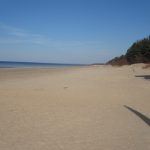 The main road is never far from the Baltic coast and I went up to look at an undeveloped stretch of shoreline near Ontika and then along to Narva-Jöesuu, a resort at the mouth of the River Narva a few miles north of the town of that name. With buildings largely concealed in forest set back from a wide sandy beach, Narva-Jöesuu has an upmarket air like Le Touquet in France or Naples in Florida although it is much smaller than either. There were few people on the beach but I remembered that on my previous trip it was mid-summer and the place was packed.
The main road is never far from the Baltic coast and I went up to look at an undeveloped stretch of shoreline near Ontika and then along to Narva-Jöesuu, a resort at the mouth of the River Narva a few miles north of the town of that name. With buildings largely concealed in forest set back from a wide sandy beach, Narva-Jöesuu has an upmarket air like Le Touquet in France or Naples in Florida although it is much smaller than either. There were few people on the beach but I remembered that on my previous trip it was mid-summer and the place was packed.
The road into the town of Narva runs alongside the river, with Russia on the other bank and at one point is a Russian T34 tank on a plinth, as a reminder of the breakthrough of Russian forces towards the end of World War 2. This is shown in the photograph with Russia in the background.
The King Hotel proved to be very easy to find, and once sorted I went for a walk to the river bank overlooking the Russian town of Ivangorod on the other side. Below is the 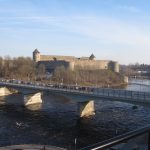 road bridge which is one of the few crossing points between Russia and Estonia and also the border of the European Union. A long line vehicles were waiting to pass through the check point into Russia and progress was slow, about eight vehicles going through in a batch in both directions every twenty minutes. In addition about the same number of pedestrians were going each way, many of them apparently carrying shopping.
road bridge which is one of the few crossing points between Russia and Estonia and also the border of the European Union. A long line vehicles were waiting to pass through the check point into Russia and progress was slow, about eight vehicles going through in a batch in both directions every twenty minutes. In addition about the same number of pedestrians were going each way, many of them apparently carrying shopping.
The streets and buildings of Ivangorod were clearly visible, as was the castle, a classical fortress facing its rival in Narva on my side of the river. On the way back to the
hotel I passed the old Town Hall, one of the very few buildings that survived the German and Russian occupations during the second world war, known locally as the Great Patriotic War. Nearby is also the large depot where commercial traffic is processed before passing into Russia, built since my last visit.
In one of the main streets I came across a beautiful life-sized bronze sculpture of a man sitting at a table playing chess. It was quite delicate and would not have survived long in most English towns before being vandalised, which is perhaps an indication of the high standard of public conduct that exists in
Estonia.
Not far from the hotel was a small modern two-storey shopping mall where I was able to get a meal. Narva had come a long way in the nine years since my last visit, being altogether much cleaner and less run down. In fact I would not describe it as run down at all now. Rather sadly, the Ladas have now gone, apart from an occasional one preserved as a collector’s piece and there seemed to be fewer signs in Russian than before.
Across country on empty roads
As always, I was on the search for car museums and had managed to track down two in Estonia, one of which was at a place called Järva-Jaani in the middle of nowhere just off the most direct route between Narva and Pärnu, a resort on the east coast. For the first 45 miles I took the main road (E20) and then turned off through the delightfully-named village of Püssi, following the route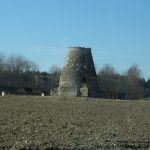 taken by Andy McNab’s hero in Firewall. Then through Tudu and a complicated rural drive to Järva-Jaani. Estonia is generally a very flat country, the highest point being only 1043ft (318m) above sea level, and the scenery consists mainly of farmland with pockets of woodland. Here and there were the shells of conical stone structures which I later discovered were the remains of windmills.
taken by Andy McNab’s hero in Firewall. Then through Tudu and a complicated rural drive to Järva-Jaani. Estonia is generally a very flat country, the highest point being only 1043ft (318m) above sea level, and the scenery consists mainly of farmland with pockets of woodland. Here and there were the shells of conical stone structures which I later discovered were the remains of windmills.
The roads are, however, well surfaced and the traffic is extremely light, so it is possible to make good progress across country. It is quite usual to travel many miles without seeing another vehicle, a complete contrast to where I live in England. The average population density of Estonia is 30 inhabitants per square kilometer, compared to 407 at home.
When I got to Järva-Jaani I managed to find some refreshments in a small supermarket before going to the museum, which was not difficult to find because there were old vehicles at the roadside for some distance around it.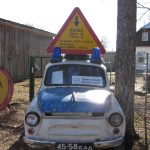
The entrance was just a field gate off a lane, with the remains of a roofless pink Dutch-registered Zaporozhets on the verge in front of it. There was no cash desk, just an older Zaporozhets police car (the mind boggles) inside the gate with a notice in Estonian telling visitors to put the entry fee in a box under the bonnet. It showed a picture of a CCTV camera as an incentive for people to do so.
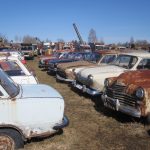 Beyond this was the most astonishing collection of vehicles and other mechanical objects that you could imagine. Cars, lorries, buses, motorcycles and, in particular, fire engines, many of them dating from the Soviet period. The collection was apparently started by the local fire service. There were things that I had only read about, and many others that I had not read about and could not identify. In the two hours or so that I was there I did not see anyone involved with the running of the place. However, at one end of the site are a couple of new unfinished buildings, one with fire engines in it, and a notice stating that the museum is being developed with EU money.
Beyond this was the most astonishing collection of vehicles and other mechanical objects that you could imagine. Cars, lorries, buses, motorcycles and, in particular, fire engines, many of them dating from the Soviet period. The collection was apparently started by the local fire service. There were things that I had only read about, and many others that I had not read about and could not identify. In the two hours or so that I was there I did not see anyone involved with the running of the place. However, at one end of the site are a couple of new unfinished buildings, one with fire engines in it, and a notice stating that the museum is being developed with EU money.
As I left this paradise I observed on the top of a tall chimney opposite to the gate a nest with a pair of storks on it. Perhaps they were hoping for an EU handout to help bring up their family.
After this I continued my near traffic-free drive to the Hotel Emmi in Parnu, a pleasant coastal town which fancies itself as a spa. Before having a meal at a nearby restaurant I walked down to the nearest rather muddy stretch of beach which is separated from the town by a wide area of scrub land. There is a much better beach further along that I visited on my previous trip.
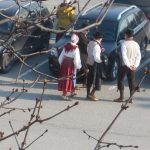 The next morning (Sunday) I looked out of the window and saw a group of people dressed in the national costume. The lady in reception said they were practicing for a folk festival later in the year. I set off on the so-called motorway E67 to Tallinn, stopping after 15 miles at the Automuseum Halinga which is the extreme opposite to the one in Järva-Jaani, being in a very stylish modern building alongside the road. Everything about the place was immaculate to the extent that you could eat off the floor or the 50 or so exhibits, which again were mostly Soviet era vehicles. There were a
The next morning (Sunday) I looked out of the window and saw a group of people dressed in the national costume. The lady in reception said they were practicing for a folk festival later in the year. I set off on the so-called motorway E67 to Tallinn, stopping after 15 miles at the Automuseum Halinga which is the extreme opposite to the one in Järva-Jaani, being in a very stylish modern building alongside the road. Everything about the place was immaculate to the extent that you could eat off the floor or the 50 or so exhibits, which again were mostly Soviet era vehicles. There were a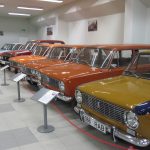 few exceptions including an Austin-Healey and a Volvo. All had been restored to a high standard and had information sheets in several languages including English.
few exceptions including an Austin-Healey and a Volvo. All had been restored to a high standard and had information sheets in several languages including English.
Thinking back over what I had seen on this trip I realized that condition of this museum was typical of present-day Estonia, with most things being clean, tidy and well-ordered. I am far from an expert on building standards, but I had noticed that the plumbing and tiling of the bathrooms of the hotels I stayed in were of a higher standard than in most places, including England. Most of the vehicles on the road are in very good condition, even the older ones, and the streets are almost litter-free. As previously mentioned, the chess player sculpture in Narva suggests that there is little vandalism and I certainly did not see any.
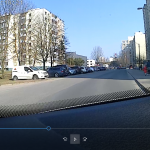 On the approach to Tallinn I took a detour to look at the massive housing estate that I had passed on the way to Narva. This was much better than I expected, with the tower blocks widely spaced, leaving large areas for parking and as mentioned earlier, by painting the buildings in light colours the feeling of oppression usually found in such developments had been avoided.
On the approach to Tallinn I took a detour to look at the massive housing estate that I had passed on the way to Narva. This was much better than I expected, with the tower blocks widely spaced, leaving large areas for parking and as mentioned earlier, by painting the buildings in light colours the feeling of oppression usually found in such developments had been avoided.
Because of the parking difficulties at the Bravo Spa I decided to find another hotel and from my tablet found one called the Aquamarine on the road overlooking the Baltic near the harbour. It was much cheaper than the Bravo Spa, but difficult to get to because of massive
roadworks. To the city centre was about 1½ miles and the receptionist said I could get there on the bus which stopped in front of the hotel but it turned out that the stopping place had been absorbed by the roadworks and moved at least ¼ mile. When I eventually got on the bus there were complications with payment because the machine refused to accept my debit card but the other passengers were very helpful and in the end I got a ticket.
This time I had a longer walk in the old town and looked at the area around the railway station, which was much as I remembered it. The enormous derelict factory behind the station had been redeveloped, but the slightly run-down kiosks and 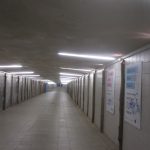 dodgy underpass were still there. To avoid the payment difficulty on the bus I walked back to the hotel.
dodgy underpass were still there. To avoid the payment difficulty on the bus I walked back to the hotel.
In general, I was impressed with Estonia. In international rankings of social and financial issues it is rated highly. It had obviously received a considerable amount of EU money, but unlike some of the southern European countries, had spent it well. The people seem to be distinctly Nordic in character and appear to have developed an economy in tune with the needs of the 21st century. As is clear from the figures stated earlier, the population density is far lower than in England, but contrary to what we are told there is no indication that it is a handicap to progress.
